Magnapinna sp. B
Michael Vecchione and Richard E. YoungIntroduction
Magnapinna sp. B (called Magnapinna sp. A in Vecchione and Young, 2006) differs from all other species in the genus in its dark epidermal pigmentation. Unfortunately this squid was also badly damaged during capture but shares the presence of slender tentacles with the other Atlantic Magnapinna spp. This species is known from a single immature male (Bergen Museum cat. no. ZMBN 77634), 95 mm ML captured by the R/V G.O. SARS (MAR-ECO cruise super station 46, local station 374) at 42.8°N, 29.3°W on ll July 2004 (Vecchione and Young, 2006).
Brief diagnosis:
A Magnapinna without ...
- chromatophores (ie, pigment not in chromatophores).
Characteristics
- Arms
- Proximal-arms with biserial suckers.
- Diameter of large proximal-arm suckers 0.5 mm (fleshy diameter) with smooth inner rings and broad aperatures.
- Distal-arms unknown due to damage.
- Tentacles
- Tentacles much narrower than adjacent arms.
- Proximal-tentacles without suckers and without trace of aboral-lateral glandular lobes; skin missing.
- Proximal-tentacle tapers gradually into distal-tentacle.
- Distal-tentacle badly damaged but remnants of tiny suckers (without sucker rings) appear to be present.
- Head
- Head badly damaged.
- Funnel
- Funnel locking-apparatus with elongate, oval depression.
- Fins
- Fins with damaged fringes but without obvious anterior lobes.
- Fin length about 65% of ML.
- Pigmentation
- moderate epidermal purple-brown pigmentation on fins and mantle.
- Oral surfaces of arms much more darkly pigmented.
- Chromatophores absent.
- Measurements
- Mantle length - 95 mm; fin length - 62 mm; fin width - 66 mm; tail - 6, mm; tentacle width at base - 2.9 mm; arm IV width at base - 5.6 mm; diameter large arm suckers - 0.5 mm.
- Mantle length - 95 mm; fin length - 62 mm; fin width - 66 mm; tail - 6, mm; tentacle width at base - 2.9 mm; arm IV width at base - 5.6 mm; diameter large arm suckers - 0.5 mm.
Figure. Oral and side views of large proximal-arm suckers of Magnapinna sp. B. Photograph from Vecchione and Young (submitted), modified.
Figure. Ventrolateral view of the brachial crown of Magnapinna sp. B showing narrow tentacle (second appendage from top) relative to adjacent arms. Photograph from Vecchione and Young (2006), modified.
Figure. Frontal view of the funnel locking-apparatus, Magnapinna sp. B. Photograph from Vecchione and Young (submitted), modified.
Figure. Pigmentation of Magnapinna sp. B. Left - Ventral view of a portion of the mantle and fins showing the epithelial pigmentation. Photograph from Vecchione and Young (2006), modified. Right - Oblique view of the buccal crown showing the dark pigmentation. Photograph by R. Young.
Comments
Magnapinna sp. B is separated from other species of the genus with narrow proximal-tentacles by the apparent absence of chromatophores, the relatively long free-mantle and the relatively broad aperatures of the proximal-arm suckers.
References
Vecchione, M. and R. E. Young. 2006. The squid family Magnapinnidae (Mollusca; Cephalopoda) in the North Atlantic with a description of Magnapinna atlantica, n. sp. Proc. Biol. Soc. Wash. 119 (3): 365-372.
Title Illustrations

| Scientific Name | Magnapinna sp. B |
|---|---|
| Specimen Condition | Preserved |
| Sex | Male |
| View | Ventral |
| Size | 95 mm ML |
| Image Use |
 This media file is licensed under the Creative Commons Attribution-NonCommercial License - Version 3.0. This media file is licensed under the Creative Commons Attribution-NonCommercial License - Version 3.0.
|
| Copyright |
©

|
About This Page

National Museum of Natural History, Washington, D. C. , USA

University of Hawaii, Honolulu, HI, USA
Page copyright © 2016 and
 Page: Tree of Life
Magnapinna sp. B.
Authored by
Michael Vecchione and Richard E. Young.
The TEXT of this page is licensed under the
Creative Commons Attribution-NonCommercial License - Version 3.0. Note that images and other media
featured on this page are each governed by their own license, and they may or may not be available
for reuse. Click on an image or a media link to access the media data window, which provides the
relevant licensing information. For the general terms and conditions of ToL material reuse and
redistribution, please see the Tree of Life Copyright
Policies.
Page: Tree of Life
Magnapinna sp. B.
Authored by
Michael Vecchione and Richard E. Young.
The TEXT of this page is licensed under the
Creative Commons Attribution-NonCommercial License - Version 3.0. Note that images and other media
featured on this page are each governed by their own license, and they may or may not be available
for reuse. Click on an image or a media link to access the media data window, which provides the
relevant licensing information. For the general terms and conditions of ToL material reuse and
redistribution, please see the Tree of Life Copyright
Policies.
- First online 16 August 2005
- Content changed 08 February 2007
Citing this page:
Vecchione, Michael and Richard E. Young. 2007. Magnapinna sp. B. Version 08 February 2007 (under construction). http://tolweb.org/Magnapinna_sp._B/52210/2007.02.08 in The Tree of Life Web Project, http://tolweb.org/




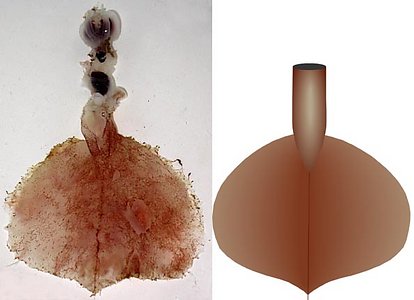
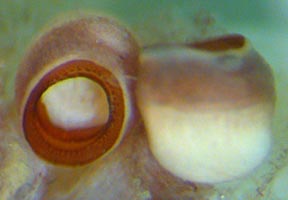
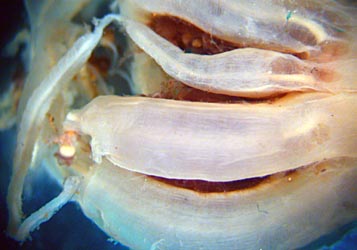
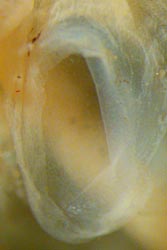
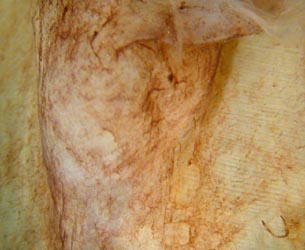
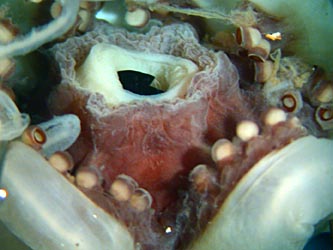
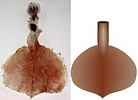


 Go to quick links
Go to quick search
Go to navigation for this section of the ToL site
Go to detailed links for the ToL site
Go to quick links
Go to quick search
Go to navigation for this section of the ToL site
Go to detailed links for the ToL site